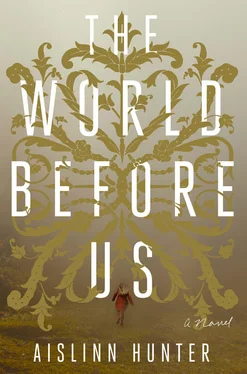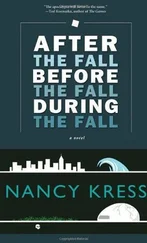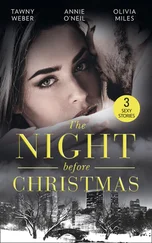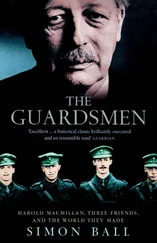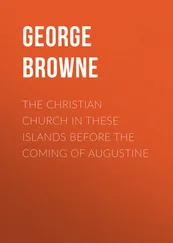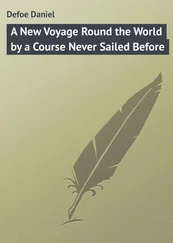Blake promises to walk Jane back, but says he wants to show her something first. And even though she feels self-conscious about what has passed between them, Jane agrees to go with him, caught up in his infectious happiness as he takes her hand and pulls her under the hoops of light cast by the street lamps and toward the start of the trail. When they reach the gate he stops and kisses her, pressing her back against the wood stiles as if he wants to start all over again. She pushes him away, laughing, and he carries on through the gate, doing a slow jog backward down the trail, cocky and enjoying himself. It’s only when she insists on knowing where they’re going — uncomfortable because he is pulling her into the dark, past the short, numbered posts and the moon-glossed plants that she and William and Lily had once passed — that he turns to look at her fully, aware of the tug of resistance in her hand.
“The grotto.”
“Why?”
“You’ll see. It’s just a little farther along.”
Those of us who had stayed with Jane follow her and Blake down the trail. Our attention is divided between them and the woods because that’s where Cat took the children when Jane’s sweater came off, and they have yet to return. They were playing a game as they wandered across the waving field, Cat asking, “What sounds do you hear?” and the girl answering, “Crickets.” A dog had barked in the distance, and then the boy said, “Dock.” And the theologian had called after them that they shouldn’t wander too far.
If Jane remembers correctly the grotto is about a ten-minute walk along the trail past the last ledge of the upper pastures. You have to cut up through the woods to get to it. It isn’t impressive: just a small recession under a curve of limestone with cobbled stones mortared around its edges. It had been tall enough for Jane to stand up in when she was fifteen, though it arched down from its apex so sharply that only a few people could take shelter if it started to rain.
When Blake says that he is taking her there, she remembers that in its centre two decades ago there was a stone plinth displaying a weathered marble bust. Jane had assumed, walking up to it with Lily, that it would be a sculpture of George Farrington, but when they got close they saw it was a woman’s head — a Greek sculpture of a girl with ringlets in her hair and drapery across her shoulder, stains from lichen and moss mottling the folds.
Now Jane passes the spot along the trail that leads down to the lake and the rock where she had sat three days ago, but Blake doesn’t stop. His hand is warm around hers as he pulls her gently forward, singing an old Oasis song about all the things he would like to say to her even though he doesn’t know how. He grins at Jane as he launches into the chorus, a daft and off-key nineteen-year-old doing whatever he can to keep the night going.
In the darkness Blake overshoots the narrow path that forks up from the main trail and they have to go back for it, using the light of his phone to find the tread where the two paths intersect. Jane remembers how Lily had announced that she needed to go to the bathroom at this point in their walk, and Jane, not sure what she should do because William was still ahead of them, took Lily up the narrow trail to quickly pee in the woods, thinking that it would alarm William if they turned around and headed all the way back to the village. Back then Jane hadn’t anticipated the grotto or the limestone cliff above it. Lily had seemed surprised too, though it was the sculpture that excited her the most. The trek up the trail was, in Lily’s mind, a diversion that she had caused, which meant that their discovery — a classical bust appearing miraculously in the midst of the monotonous woods — was also hers.
Jane and Blake stop along a slope of alder three quarters of the way up the trail, and from there Jane can make out the glow of a fire. The grotto’s roof is lit up: an orange waver visible through the rails of the trees. Blake takes Jane’s hand again and leads her farther up, breaking twigs and kicking aside fallen branches as he goes. Toward the top the easy chatter of two men’s voices cuts clearly through the night air, while a radio news report runs underneath their conversation.
About eighty feet from the clearing Blake stops, still within the cover of the trees but level to the men, who sit on fold-out chairs in puffy coats, a pit fire between them. Jane turns to ask Blake what they’re doing up here, and in turning realizes that it isn’t the pit fire lighting the grotto but a carpet of votive candles laid over the grotto’s floor — dozens of them, flickering under the limestone. The man in the tweed cap gets up and pulls a can of lager out of a nearby cooler, tosses a bag of crisps at his mate.
Blake whispers in Jane’s ear, “It’s a vigil for the trapped miners. Half the village has been taking turns. The big guy on the left is a friend of my dad’s.” He inclines his head toward the grotto. “Wanna say hello?”
Jane shakes her head no and rubs the sides of her arms to warm herself. She can see that the plinth and sculpture are gone and that a sagging placard leans against the grotto wall. Day 14 is written on it in black marker, the 13 and 12 beside it crossed out. Jane recalls the news report she’d heard on the drive from London: the days it might take the rescue workers to drill an air hole, the months it might take to bring the men to the surface. Her own problems suddenly feel small.
Watching the men keep their vigil, Jane thinks about her own choice to hold on so tightly to what happened to Lily. She has chosen to live in the past, just as she’s chosen to lie to Blake, to lie — through omission — to almost everyone.
Over by the pit fire one of the men laughs heartily at something his companion has said, and their ease with each other, and the ease Jane feels with Blake, is strangely comforting. She drops her head onto Blake’s shoulder and he turns and kisses her forehead, says, “Tell me when you’re ready to head down.”
The cottages that back onto the falls are a poorer version of the limestone houses that sit along the river: one-storey structures that would have been built for the men who ran the Farrington properties — the stable manager and head gardener — or for the local headmaster or a village merchant. Most of the houses are dark as we walk past them, their tenants sleeping, and so Blake has to guide Jane along the pavement until they get to the farthest house, the one with a light in its back kitchen.
For us there is often no difference between what we see in the world and what we watch on the telly. Actions set in motion by the living can feel like scenes so far removed from us that any act of intercession on our part seems impossible. In this way, the window in the cottage at the end of the road is not unlike a film screen, one on which a girl of fifteen or sixteen appears in flannel pyjama bottoms and a T-shirt, opening a kitchen cupboard at the back of the house to pull out a box of cereal. This is where we find Cat and the children — peering between the gaping curtains as the teenager roots around in the refrigerator for milk.
“Cat found the twooms,” the girl says when she senses our presence behind her.
“The twooms ?” the one with the soft voice asks.
“Headstones,” Cat explains, “up from the gate in the woods. Not very big. Probably the Farrington family’s dogs.”
“ Ruff-ruff, ” barks our girl, watching as the teenager scoops cereal out of a blue ceramic bowl and deposits it in her mouth. “I’m hungry.”
“Me too,” says the boy, which is what he always says when the girl mentions food. Even though he knows that what he feels is not actual hunger, he likes the idea that his needs concern us, that because we are adults, all forms of provision fall under our sway.
Читать дальше
